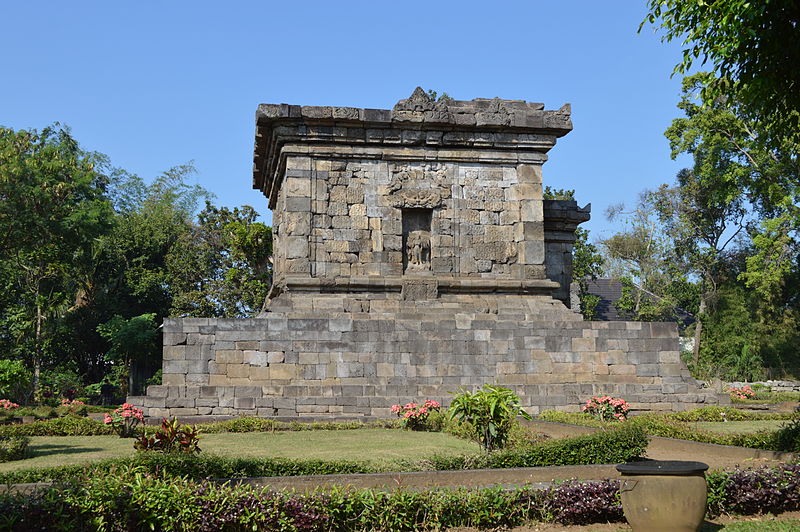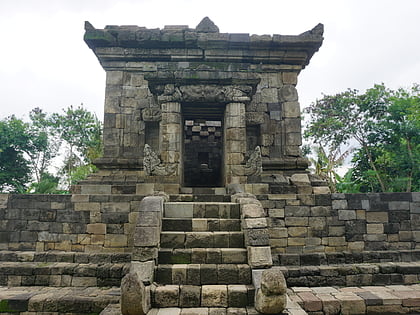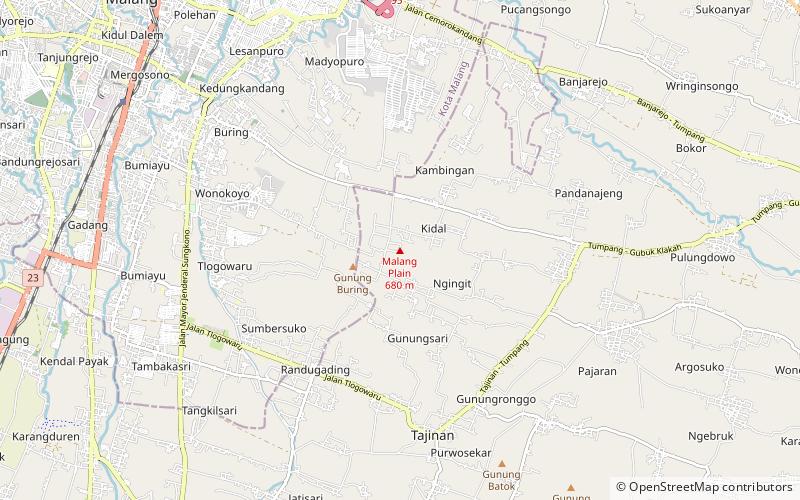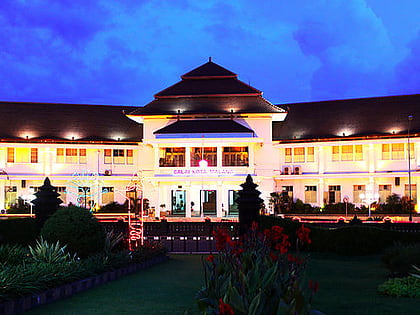Badut, Malang


Facts and practical information
Nestled in the vibrant city of Malang, Indonesia, lies the ancient temple of Badut, a preeminent relic of the country's rich cultural tapestry. The temple, which dates back to the 8th century, is a testament to the architectural prowess and spiritual heritage of the Mataram Kingdom that once thrived in the region.
Badut temple stands as one of the lesser-known yet historically significant sites in Java. It was constructed around the year 760 CE, during the reign of King Gajayana of the Kanjuruhan Kingdom, as indicated by inscriptions discovered at the site. This makes it one of the earliest Hindu temples in Eastern Java.
The architectural design of the Badut temple is characterized by its modest size and the use of andesite stone, which was common for structures of its period. Despite its simplicity, the temple carries the hallmarks of classical Javanese temple architecture, including a square base, a body known as the 'cella' or 'garbhagriha', and a roof that once likely mirrored the form of a mountain, symbolizing the dwelling of the gods.
Though not as grandiose as other Javanese temples like Borobudur or Prambanan, Badut holds its own charm and provides insight into the early spread of Hinduism in Java. Archaeologists and historians value the site for its contribution to understanding the region's transition from indigenous animistic beliefs to Hinduism and, later, Buddhism.
Today, Badut stands as a serene and somewhat mystical destination for visitors interested in the early history of Java. Those who venture to this quiet corner of Malang are rewarded with a glimpse into the spiritual life of an ancient civilization and the opportunity to reflect on the passage of time and the endurance of cultural landmarks.
Malang
Badut – popular in the area (distance from the attraction)
Nearby attractions include: Singhasari temple, Great Mosque of Malang, Museum Brawijaya, Malang Plain.











